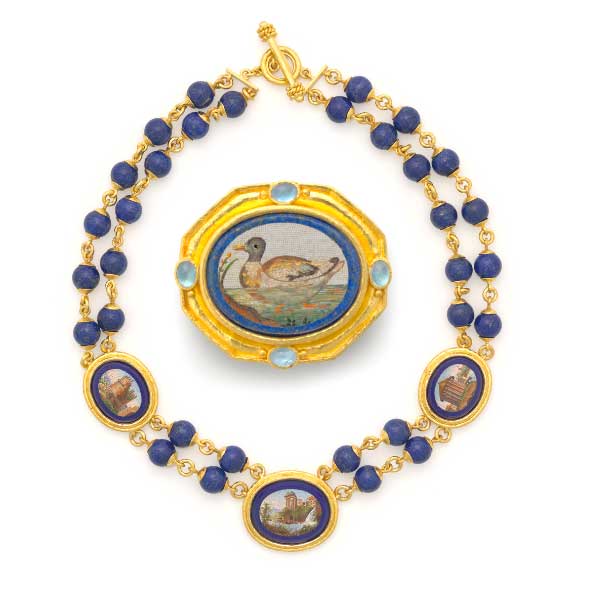
So many of the best jewelry designers are also great collectors of jewelry themselves. Fans of Elizabeth Locke, best known for her marvelous Etruscan and neocolassical intaglio and gemstone pendants, link bracelets, and cocktail rings in rich, high-karat gold, almost certainly know her to be an avid collector of decorative art and antiques. (Her Federal-style home in Virginia has been photographed by everyone from Architectural Digest and Garden & Gun to Veranda magazines.)
Locke’s particular passion is one-of-a-kind antiquities, with an emphasis on 19th-century micromosaics from Italy. Now, a new exhibit focused on Locke’s personal collection of these unique objects is set to open at the Virginia Museum of Fine Arts (VMFA) in Richmond, Va., at the end of this month.
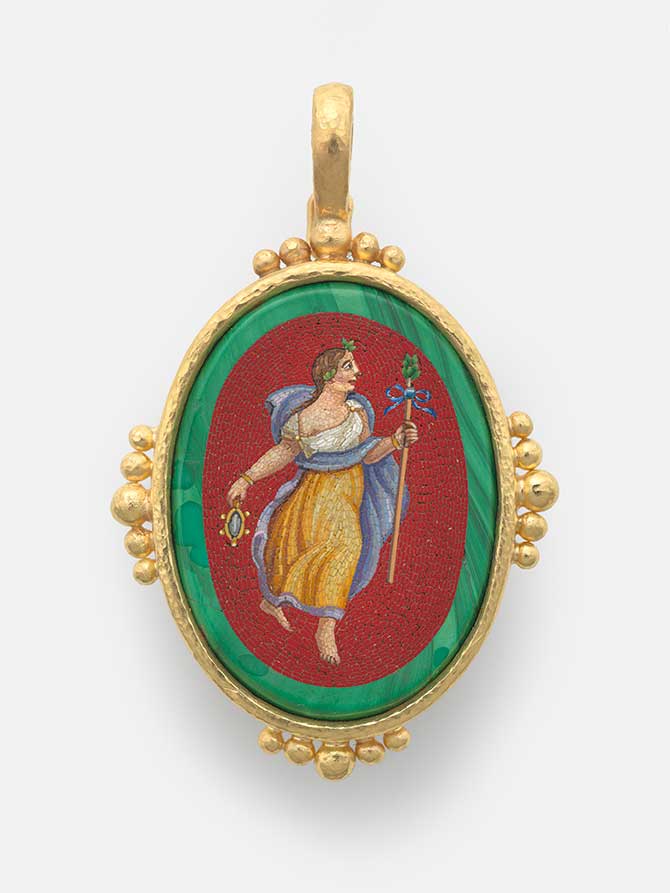
Return to the Grand Tour: Micromosaic Jewels from the Collection of Elizabeth Locke gathers 92 examples dating from the late 18th and 19th centuries that feature subjects such as Renaissance paintings, architecture, animals, and landscapes. Many of these have been reset as Elizabeth Locke jewelry designs, whether it’s a depiction of St. Peter’s Square rimmed in gold and suspended from malachite beads or a miniature Pantheon used as the centerpiece of a wide hammered cuff.
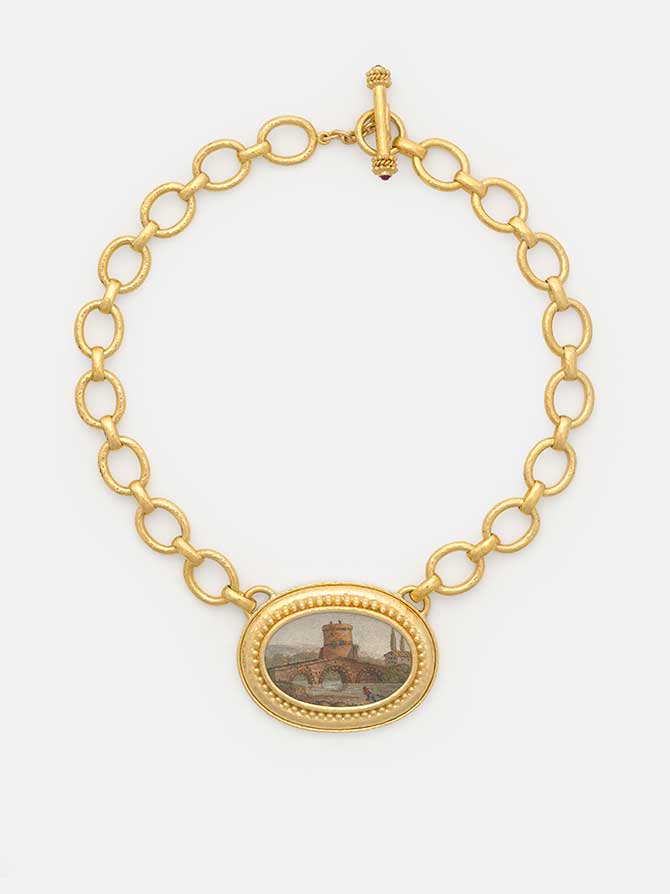
According to the museum, micromosaics have their origin in the ancient world, when artisans from Iraq first applied decorative blocks of clay as architectural details on stately buildings. Centuries of technical innovation resulted in further refinements and the establishment of the Vatican Mosaic Studio, where mosaicists began replicating Renaissance paintings in durable enameled glass tiles.
By the late 18th century, highly intricate small-scale works were being produced. Unlike large-scale mosaics, which could take a decade to create, micromosaics could be marketed to locals and tourists as gifts and souvenirs of the Grand Tour.
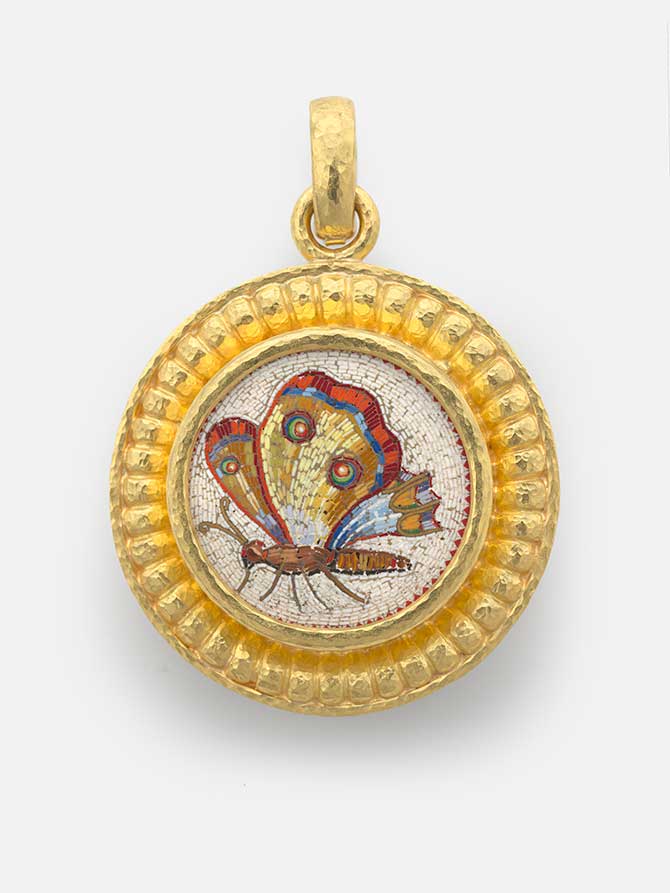
“As much as I admire the micromosaic boxes and tables, I love the diminutive pieces the most because they can be worn,” said Locke in the museum’s announcement. “I always imagine how pleased a nineteenth-century lady would have been on a gray London day when she looked at her wrist and saw a bracelet depicting the famous sights of Rome that she had visited in a previous summer. They are special pieces, and I can’t imagine a better venue to debut them than at the Virginia Museum of Fine Arts—a world-class institution that has inspired me for many years.”
The exhibition was curated by Susan J. Rawles, VMFA’s associate curator of American painting and decorative arts. “This exhibition of works from the Locke collection provides a lens on the continuity of the ancient art form of the mosaic into the modern era,” she said in a statement.
“Like the Grand Tourists of centuries past, Elizabeth’s appreciation for micromosaics was inspired by travels abroad, and her talent for setting micromosaics as the featured ornament in her jewelry designs continues a tradition begun by her predecessors more than two hundred years ago,” Rawles continued.
See more highlights from the exhibit below.
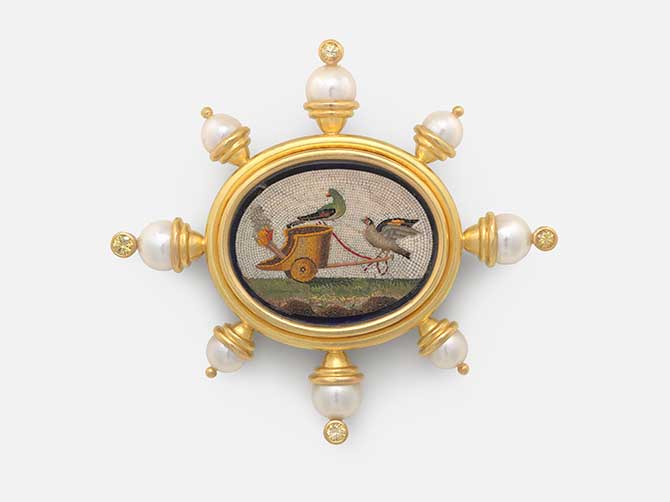
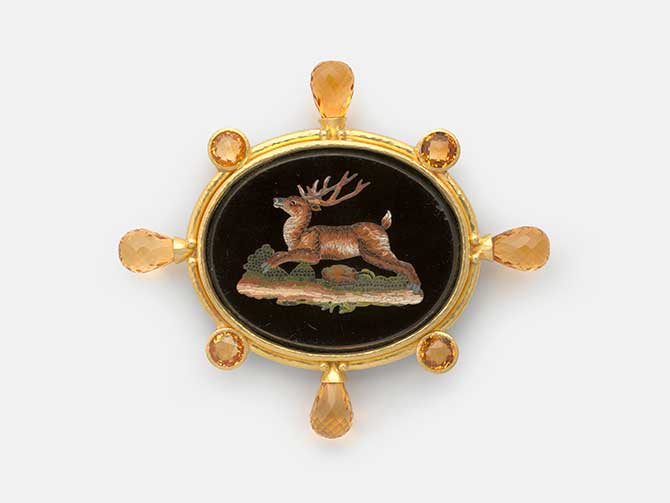
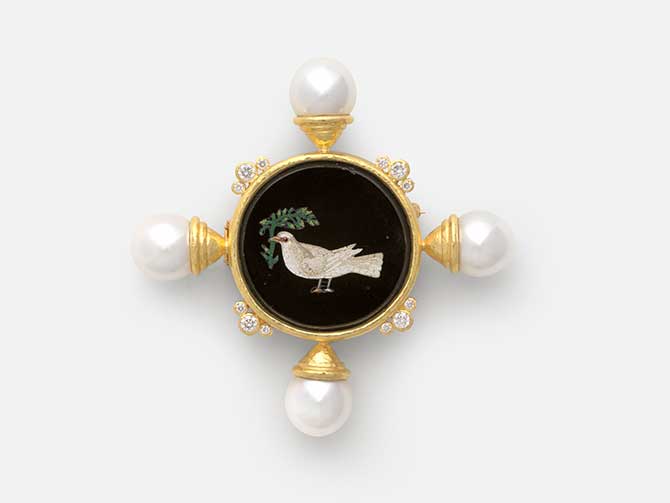
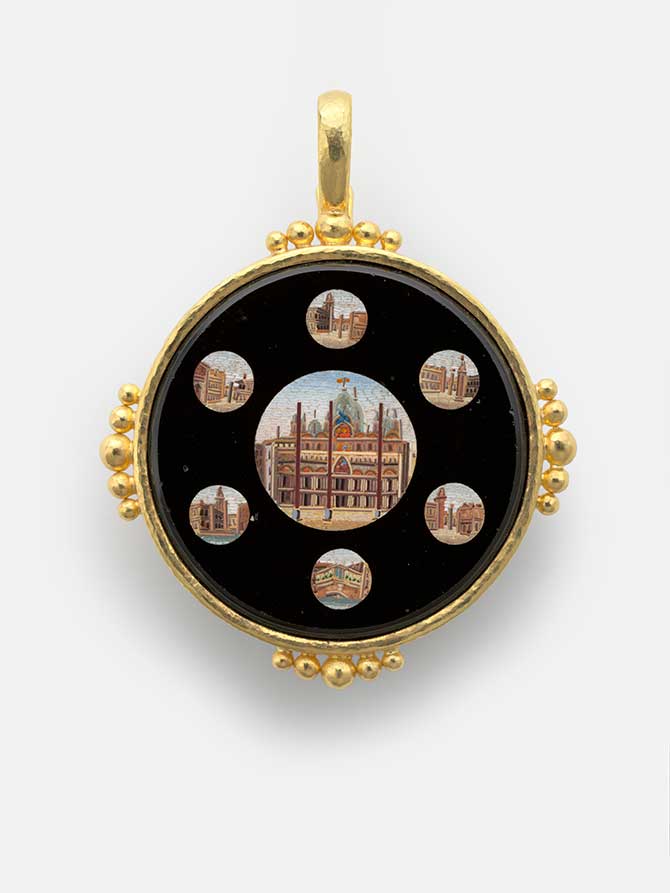
Top: An Elizabeth Locke necklace and brooch/pendant, each featuring micromosaics from the designer’s personal collection. Both pieces are part of Return to the Grand Tour: Micromosaic Jewels from the Collection of Elizabeth Locke at the Virginia Museum of Fine Arts, on view April 27–Sept. 2 (all photos courtesy of the Virginia Museum of Fine Arts).
Follow me on Instagram: @aelliott718
- Subscribe to the JCK News Daily
- Subscribe to the JCK Special Report
- Follow JCK on Instagram: @jckmagazine
- Follow JCK on X: @jckmagazine
- Follow JCK on Facebook: @jckmagazine